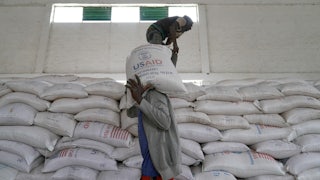Despite having several years to learn about their quarry, most of the media never really figured out how to cover Donald Trump. Some journalists got better at it, sure: It became obvious that you couldn’t breeze past a follow-up question or forgo a fact-check; by the end of his presidency many reporters had learned to tap reserves of discipline they’d never previously plumbed. And Trump’s superhuman ability to short-circuit the news cycle had lessened—though only to a degree.
Somehow, the press pulled a silver lining out of the January 6 insurrection, in that it ended with Donald Trump going away, in numerous ways. Chief among them was the way the aftermath resulted in his most powerful tool, his Twitter account, slipping from his hands. Trump was, in many ways, in exile. Literally, he ensconced himself at Mar-a-Lago, where he Colonel Kurtzed himself among sycophants and boxes of purloined documents; metaphorically, he was increasingly at a distance from the news. And it helped that he didn’t have much in the way of new material: He has continued to utter the same bombastic lies. For most of the last two years, he has largely been ignored.
That is all starting to change, and quickly. There’s one arena that Trump never really departed from—he remained the most powerful figure in Republican Party politics even during his quasi-exile. This has helped him to finally reenter our orbit as a presidential aspirant with a commanding lead in the GOP presidential primary. None of his rivals, at this stage of the contest, seem to have any chance of defeating him. Indeed, most of them seem to be sticking around hoping that he will simply pull out of the race, leaving them the beneficiary of either some future health concern or his present role as a defendant in numerous trials.
We have seen some improvement on the slop mess the media made of his 2016 campaign: There is little of the endless, breathless coverage of Trump’s every move that defined that race, in both the primary and the general election. There are no hours-long shots of empty lecterns, no fawning coverage of his supposed “populism.” Even the reliable chatting-with-Trump-voters-at-the-diner stories have all but disappeared.
Nevertheless, it is not clear at all that the press has an understanding of how to cover Trump as what he truly is: a singular threat to American democracy. Somehow this is a fact that either evades reporters or remains something they refuse to accept. But it’s a critical thing to grasp: Even though much of the coverage of Trump can be considered “negative,” this is the missing piece that might make that coverage vital.
And while the press has shed itself of some of its worst habits, new ones have emerged. Most notably among these is the tendency to “both-sides” Trump’s many scandals—his numerous felonies, calling for the chairman of the joint chiefs of staff to be executed, a plan to destroy the federal government as we know it—as the equalizing counterpoint to a faux impeachment push from House Republicans. President Biden is only three years older than Trump, and yet his age is treated as a grave national security concern, whereas Trump’s—along with his general temperament—is largely ignored or explained away.
It’s still early in the 2024 race. Much can and will change. But on Wednesday, October 11, I’ll be sitting down with three journalists—Tara McGowan, Don Lemon, and Jay Rosen—to discuss how the press is covering Trump and how it should be covering Trump. We so hope to see you there or on the livestream.










